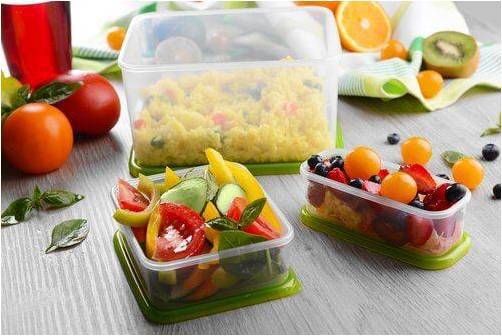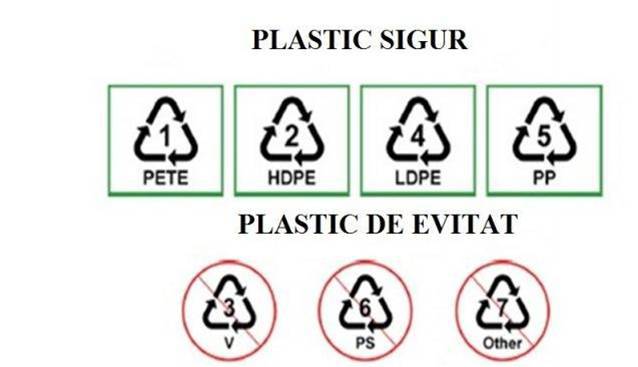How much plastic do we have in the lunch package?
Specialists draw attention to the danger to which people are subjected due to the presence of plastic in food. We ingest plastic, microscopic particles every day, both when we eat, when we drink, and even when we breathe.
It is estimated, for example, that a person ingests between 74,000 and 121,000 plastic particles each year, and those who drink bottled water in pets can add to this already worrying "score" 90,000 plastic particles annually.
Since the 1950s and until now, people have produced almost 8 billion tons of plastic, of which only 10% has been recycled. Over time, the plastic broke into small particles that ended up in lakes, rivers and oceans, after which they gradually contaminated our water and food. Researchers say some of these particles may contain bisphenol A, phthalates and styrene.
Here, for example, are some conditions that bisphenol A can cause:
Cancer (breast, cervical, ovarian, cerebral, lung, prostate, liver)
Lymphoma
Uterine cysts, infertility and miscarriages
Hyperactivity and attention deficit syndrome
Early puberty in children
Autism
Parkinson's disease
Cardiovascular disease and obesity
can reduce male and female fertility
Styrene is associated with nervous system problems, hearing loss and cancer.
Do you serve some plastic?

Here is a top of the food made in one form or another of… plastic. They are not used by the body. On the contrary, they make him very tired of trying to get rid of them.
And this only happens if the body is perfectly healthy. If not, the plastics are stored in the cells. In the long run, deposits mean cancer.
1. Cheeses that are not made from milk. In all cheese districts you will find huge cheeses with the appearance of cheese or cheese made from hydrogenated fats, ie margarine. They are spiced with various flavors, so they become perfect as pizza toppings. The food industry has two additives that simply perfectly mimic the taste of cheese!
2. Protein powder is found in meat or vegetable pies and is used in industry for technical reasons. Gives good taste and consistency. Some dusts are allergenic, with a harmful effect on the kidneys or liver.
3. Pastry mixes. This category includes both flour mixes and pie sheets. In addition to gaining weight, they bring an impressive amount of plastic-like compounds into the body.
4. Super-industrialized sweets, especially jellies and candies. No ingredient in these products is natural. These should be avoided even by the target recipients: children. Up to 3 years, their metabolic systems do not allow them to eliminate these harmful substances and, through regular consumption, can create the premises for serious metabolic diseases.
5. Supermarket "natural juices" contain less than 1% fruit or tea. Otherwise, let the chemistry live!
Microplastic pollution can only be stopped with notable global changes, but there are several ways in which individuals can reduce its consumption, even if they cannot avoid it altogether.
Avoid eating and drinking plastic-wrapped products.
Do not use plastic containers to store, serve or heat food.
Use glass or metal dishes in the kitchen.
Do not eat canned food, but eat fresh, home-cooked food!
Drink tap water.
Use glass bottles to feed your baby (even if they seem more dangerous because of the risk of falling and breaking).
Do not buy flexible plastic toys or allow children to put such objects in their mouths.
Do not heat food in the microwave in plastic dishes.
Dispose of damaged or melted containers.
Do not reuse plastic bottles to drink water during the day.
Find ways to minimize dust in your home.
Do not gnaw on pens or other plastic objects.
Limit as much as possible the plastic in your life !!!
Here's how we can tell if the plastic packaging is or isn't less toxic to the human body: there are symbols like the ones in the drawing below on each package.
Safe plastic/ Plastic to avoid

What can we do at home?
1. Starting from the quote of a famous man: "If you want to change the world, start by making your bed in the morning!", Paraphrasing, if you want the plastic to be in small quantities in your food and your family, recycle your first pet bag!
2. To be convinced that what is written in the above lines is reality, go to a corner of your garden and bury plastic objects (a pet, an organic package, a package of ham, cheese or whatever). you have them around the house) and look for them in a year. You will notice which of them have been decomposed by the earth, so he recognized them and they are not dangerous to health, and the ones you find intact will last and pollute for many years!
3. Look for the plastic packaging in your home (at least 8) and see which category it falls into, in terms of toxicity.